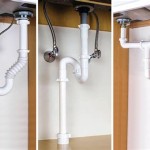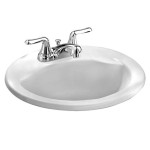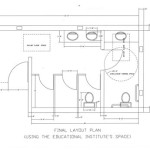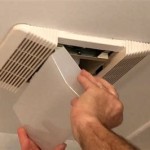```html
How to Fix a Bathroom Faucet Leaking Around the Base: Addressing Potential Basement Issues
A leaky bathroom faucet, particularly one that is leaking around the base where it meets the sink, is a common household problem. While seemingly minor, this issue can lead to significant water waste, increased water bills, and, critically, potential water damage in areas below the bathroom, including the basement. Understanding the causes of this type of leak and knowing how to address it promptly is crucial for maintaining a healthy and cost-effective home.
The source of a leak around the base of a bathroom faucet can stem from several factors, ranging from wear and tear of internal components to improper installation. Identifying the root cause is the first step toward a successful repair. Neglecting a seemingly small leak can gradually worsen, potentially leading to water damage affecting walls, flooring, and even the structural integrity of the building, especially if the leak seeps down into the basement. This can manifest as mold growth, wood rot, and damage to stored items, making diligent investigation and repair paramount.
Identifying Common Causes of Leaks Around the Faucet Base
Several culprits commonly contribute to bathroom faucet leaks at the base. Pinpointing the specific cause will guide you toward the appropriate repair strategy. Common causes include:
Worn-Out O-Rings: O-rings are small, rubber gaskets that create a watertight seal between the faucet body and the sink. Over time, these rings can dry out, crack, or become brittle, losing their ability to seal effectively. This is one of the most frequent causes of leaks around the base. The constant exposure to water and minerals in the water supply accelerates their degradation. Examining the O-rings for visible damage is essential in diagnosing this problem.
Loose Mounting Nuts: The faucet is typically secured to the sink using mounting nuts located underneath the sink. If these nuts loosen, the faucet can shift slightly, breaking the seal between the faucet base and the sink. This creates a gap through which water can seep when the faucet is in use. Regular inspection and tightening of these nuts are recommended preventative measures.
Corroded or Damaged Faucet Body: Depending on the age and material of the faucet, the faucet body itself can develop corrosion or cracks. This is particularly common in older faucets made of less durable materials. Cracks, even hairline fractures, can allow water to escape around the base. In cases of significant corrosion or damage, replacing the entire faucet may be the most practical solution.
Problems with the Sink's Caulk or Putty: A bead of caulk or plumber's putty is typically applied around the base of the faucet where it meets the sink to create a waterproof barrier. This sealant can deteriorate over time, becoming cracked, brittle, or pulling away from the faucet base. When this happens, water can penetrate the gap and leak downward. Removing the old sealant and applying a fresh bead is often necessary to address this issue.
High Water Pressure: Excessively high water pressure can exacerbate existing weaknesses in seals and connections. While not directly causing the leak, it can accelerate the deterioration of faucet components and increase the severity of existing leaks. Consider testing your home's water pressure and installing a pressure regulator if necessary.
Step-by-Step Guide to Fixing the Leak
Before starting any repair, it's crucial to gather the necessary tools and materials. This typically includes an adjustable wrench, a basin wrench (for reaching tight spaces under the sink), a screwdriver set, new O-rings, plumber's putty or caulk, a utility knife (for removing old caulk), and a towel or bucket to catch any spilled water. Always turn off the water supply to the faucet before beginning any work.
Step 1: Shut Off the Water Supply: Locate the shut-off valves for both the hot and cold water lines leading to the faucet. These are usually located under the sink. Turn both valves clockwise until they are fully closed. Once the water is shut off, turn on the faucet to relieve any remaining pressure in the lines. Place a bucket under the sink to catch any residual water that may drip out.
Step 2: Inspect and Replace O-Rings (if applicable): If you suspect worn O-rings are the culprit, you will need to disassemble the faucet to access them. The specific disassembly procedure will vary depending on the faucet model. Refer to the faucet's user manual or search online for instructions specific to your faucet type. Once you've accessed the O-rings, carefully inspect them for damage. Replace any damaged or worn O-rings with new ones of the correct size. Lightly lubricate the new O-rings with silicone grease to ensure a better seal and prevent damage during installation.
Step 3: Tighten Mounting Nuts: Locate the mounting nuts underneath the sink that secure the faucet to the basin. Use a basin wrench or adjustable wrench to tighten these nuts. Be careful not to overtighten them, as this could damage the sink or faucet. Tighten them just enough to secure the faucet firmly to the sink. Check for any further movement or wobbling of the faucet after tightening.
Step 4: Re-Caulk or Apply New Putty: If the existing caulk or putty around the base of the faucet is cracked or deteriorated, you will need to remove it. Use a utility knife to carefully cut away the old sealant. Clean the area thoroughly with a sponge or cloth to remove any residue. Apply a fresh bead of caulk or a ring of plumber's putty around the base of the faucet, ensuring that there are no gaps. Smooth the sealant with your finger and remove any excess. Allow the sealant to cure according to the manufacturer's instructions before using the faucet.
Step 5: Inspect the Faucet Body: Carefully inspect the faucet body for any signs of corrosion or cracks. If you find any damage, the faucet may need to be replaced. Small cracks might be temporarily sealed with epoxy, but this is generally a short-term solution. Replacement is usually the most reliable long-term fix.
Step 6: Check Water Pressure: If you suspect high water pressure is contributing to the problem, consider testing your home's water pressure. You can purchase a water pressure gauge at most hardware stores. Ideal water pressure is typically between 40 and 60 psi. If your water pressure is significantly higher, you may need to install a pressure regulator to protect your plumbing system.
Step 7: Reassemble and Test: After completing the repairs, carefully reassemble the faucet according to the manufacturer's instructions. Turn the water supply back on slowly and check for any leaks. If you still see leaks, carefully re-examine the areas you repaired and make any necessary adjustments. Observe the faucet base closely during and after use to confirm the leak is resolved.
Addressing Potential Basement Damage from Leaking Faucets
A leaking bathroom faucet can have ramifications far beyond the immediate area of the sink. The consequences can extend to the basement, potentially causing significant damage if the leak is left unaddressed. Identifying early signs of basement water damage is critical for preventing more extensive problems.
Recognizing Signs of Water Damage in Your Basement: Early detection of water damage can save considerable time and money. Be vigilant for the following signs:
Musty Odors: A persistent musty odor in the basement is a strong indicator of mold growth, which thrives in damp environments caused by water leaks.
Visible Mold Growth: Mold can appear in various colors (black, green, white) and textures. Look for it on walls, floors, ceilings, and around pipes. Even small patches should be addressed promptly.
Water Stains: Discoloration or staining on walls, ceilings, or floors can indicate that water has been seeping through. Look for brown or yellowish stains.
Peeling Paint or Wallpaper: Moisture can cause paint to bubble, peel, or blister. Wallpaper may also peel away from the walls in damp areas.
Dampness or Condensation: Feel for dampness on walls or floors. Condensation on pipes or other surfaces can also indicate a moisture problem.
Efflorescence: This is a white, powdery deposit that can appear on concrete or brick walls. It's caused by mineral salts left behind as water evaporates.
Wood Rot: If you have wooden beams, framing, or other wooden structures in your basement, check for signs of rot. Soft, crumbly wood is an indication of water damage.
Addressing Basement Water Damage: If you discover signs of water damage in your basement, take immediate action to mitigate the problem:
Identify and Stop the Source of the Leak: The first step is to identify and stop the source of the water leak. In this case, it would involve fixing the bathroom faucet leak. Regularly inspect plumbing fixtures and pipes for leaks to prevent future problems.
Dry Out the Affected Area: Use fans, dehumidifiers, and heaters to thoroughly dry out the affected area. Remove any wet materials, such as carpets or furniture, to prevent mold growth.
Remove Mold: Use a mold cleaner or a solution of bleach and water (1 part bleach to 10 parts water) to carefully clean mold-affected surfaces. Wear protective gear, such as gloves, a mask, and eye protection. For extensive mold growth, consider hiring a professional mold remediation service.
Repair Damaged Materials: Replace any damaged drywall, flooring, or other materials that have been affected by water damage. Ensure that the area is completely dry before making any repairs.
Improve Ventilation: Improve ventilation in your basement to reduce moisture levels. Consider installing a dehumidifier or an exhaust fan. Proper ventilation helps to prevent future mold growth and water damage.
Consider Professional Assistance: For significant water damage or mold problems, it's advisable to consult with a professional contractor or mold remediation specialist. They can assess the extent of the damage and recommend the appropriate course of action.
By understanding the causes of faucet leaks, implementing prompt repair strategies, and addressing any resulting basement water damage, homeowners can safeguard their property and prevent costly repairs down the line. Regular inspection and maintenance of plumbing fixtures are essential for maintaining a healthy and secure home environment.
```
How To Fix A Leaky Faucet True Value

Fixing A Leaking Utility Sink Faucet

How To Fix Leaky Quarter Turn Faucets No More Drips Ecohome

How To Fix A Leaking Bathroom Faucet Quit That Drip

How To Fix A Leaking Bathroom Faucet Quit That Drip

How To Fix A Leaky Faucet Handle 12 Steps With Pictures

How To Fix Leaky Quarter Turn Faucets No More Drips Ecohome

Bathroom Faucet Leaking At Base We Have A Few Fixes Upgradedhome Com

How To Fix Leaky Quarter Turn Faucets No More Drips Ecohome

How To Fix A Leaking Bathtub Faucet Repair Replace
Related Posts







